Originally opened in 1963, The Capitol Hotel Tokyu was closed in 2006 for renovation. It was rebuilt from the ground up and reopened in 2010. The 21st century version of the hotel is now a 29-story modern skyscraper designed by renowned architect Kengo Kuma and houses an art collection which is a connection to the hotel’s past and a who is who lesson in Japanese art history. We take you on a tour of some of the artworks present in the hotel.
The art collection was inherited from the previous owners. The current curators chose and placed the artworks to harmonise with the new hotel. The concept that underlines the art collection is called ‘fueki-ryuko’ and is taken from a famous Japanese haiku poet called Basho Matsuo. Fueki-ryuko (continuity and change) means pursuing something new and different will eventually return us to its eternal value.
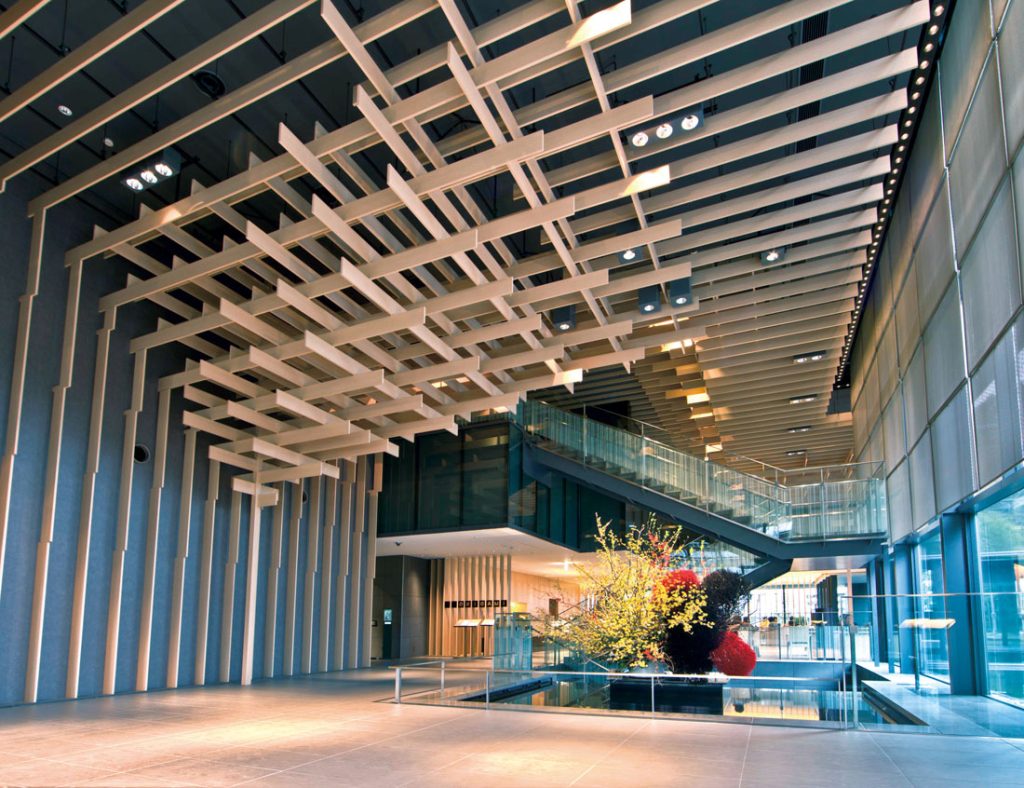
Sogetsu Ikebana & Sofu Teshigahara
The entrance hall is a spectacular affair, every month guests are treated to a new floral art arrangement which reflects the changes of the seasons. Sogetsu Ryu Ikebana is a contemporary art form of flower arranging based on Japanese traditions, without being bound by limits and boundaries in shape and form.
The Sogetsu School of Ikebana was founded by Sofu Teshigahara. Sofu is recognised as having made a significant mark on the history of postwar Japanese art. Born in Osaka 1900, he trained under his father, an Ikebana sensei (master), and began teaching ikebana at the age of 13 earning him the nickname “Little Teacher”. Rebelling against strict conventions, he sought to revolutionise ikebana into a modern art form, and left his father’s school in 1927 to establish Sogetsu School of Ikebana.
Teshigahara said of his practice: “I hope to demonstrate that it is possible to create expressions using anything” and believed that ikebana could be made by anyone anytime, anywhere, using any material. Through treating materials such as iron, stone, and wood as equivalent to flowers, Teshigahara served to liberate Ikebana from its restricted visual and material language, meanwhile forming an approach to a considerable sculptural practice. There are three sculptures by Teshigahara in the hotel.
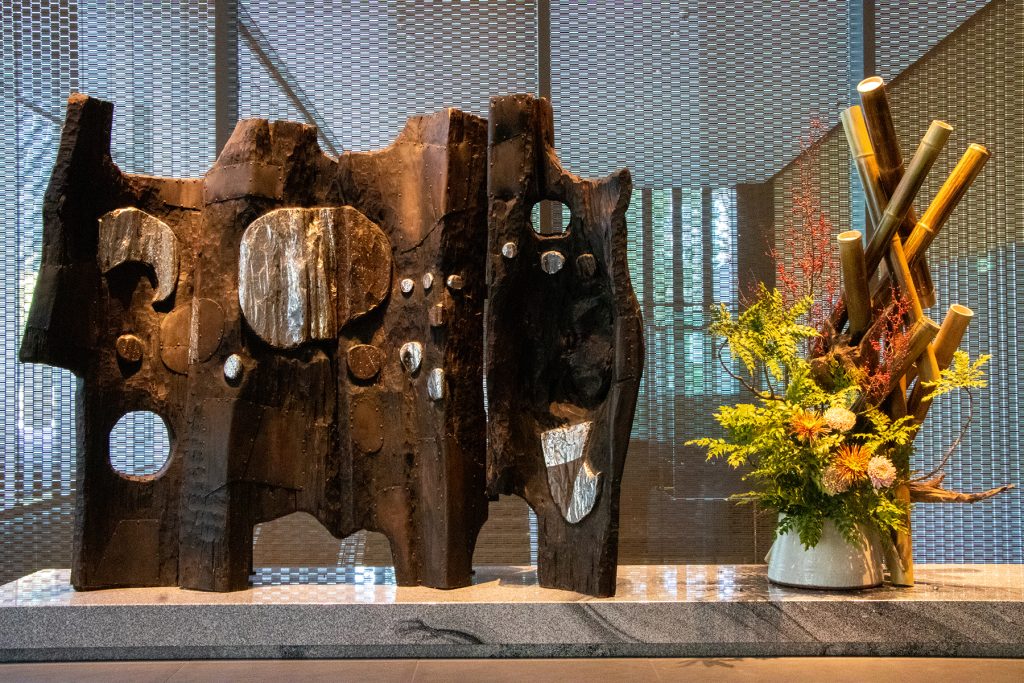
Elsewhere in the hotel you can spot the floral arrangements popping up and adding a splash of colour to the natural tones of the hotel.
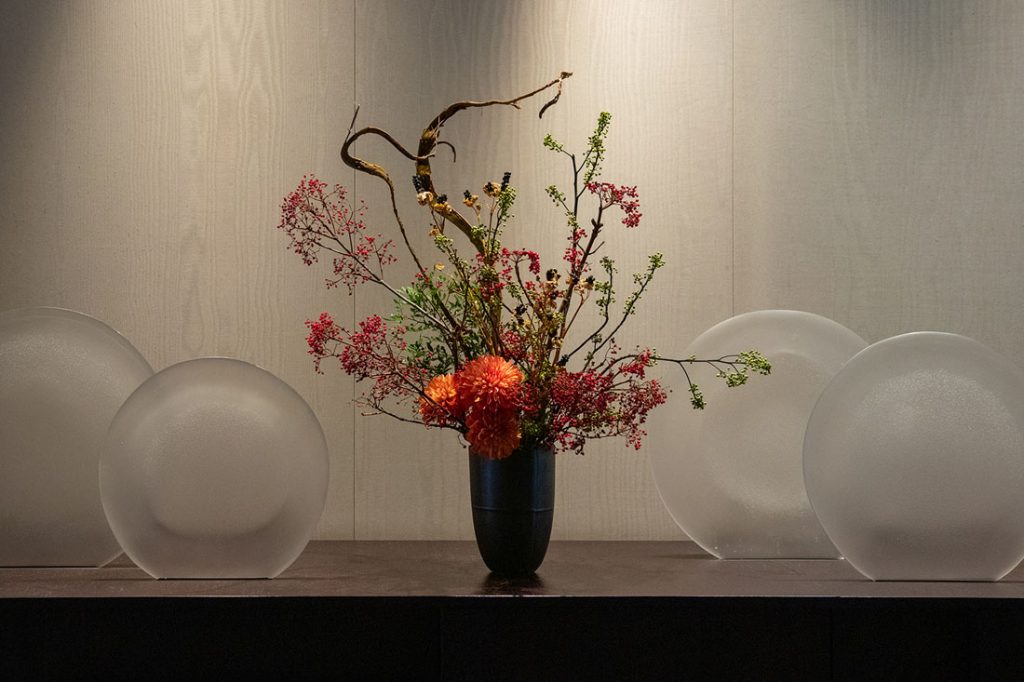
Toko Shinoda
The check in desk is where two major artworks by Toko Shinoda can be seen. They are placed opposite each other and are the embodiment of the hotel’s fueki-ryuko concept.
Toko was born in 1913, she worked with sumi ink paintings and prints. Her art merges traditional calligraphy with modern abstract expressionism. Influenced by American abstract expressionists like Jackson Pollock, Shinoda’s work is characterised by a loose, gestural style and imagery inspired by the natural world. When she turned 100 in 2013, she declared herself married to her work and continued to produce art until her death in March 2021.
At 97 she was commissioned to create a new piece (Yutaka) to be placed opposite a previous commission (below, Untitled) to connect the past and the future history of the hotel.
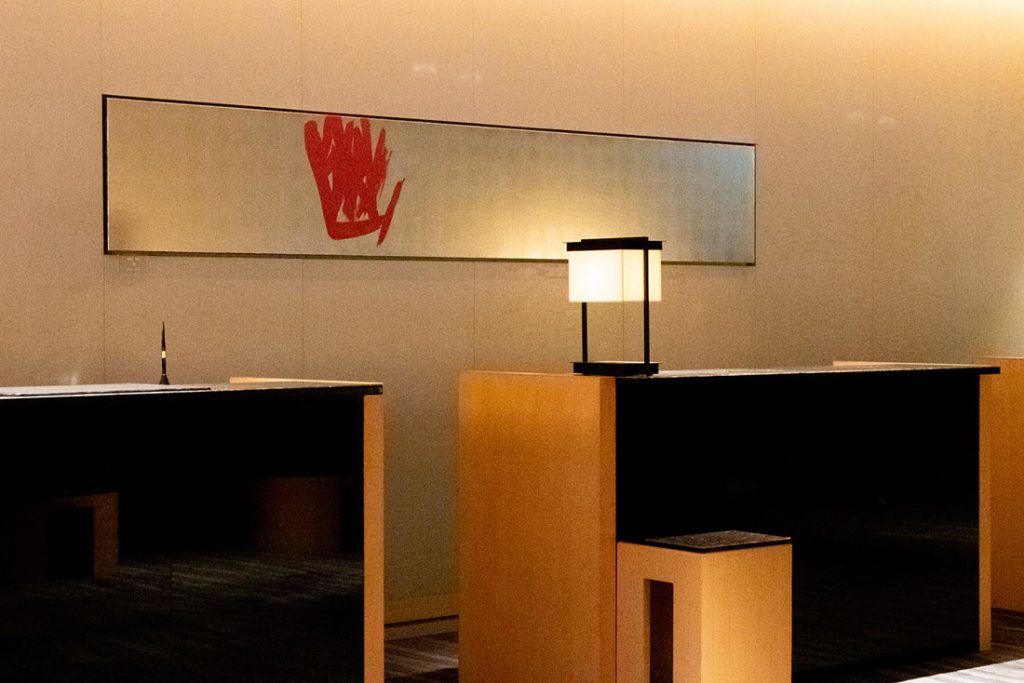
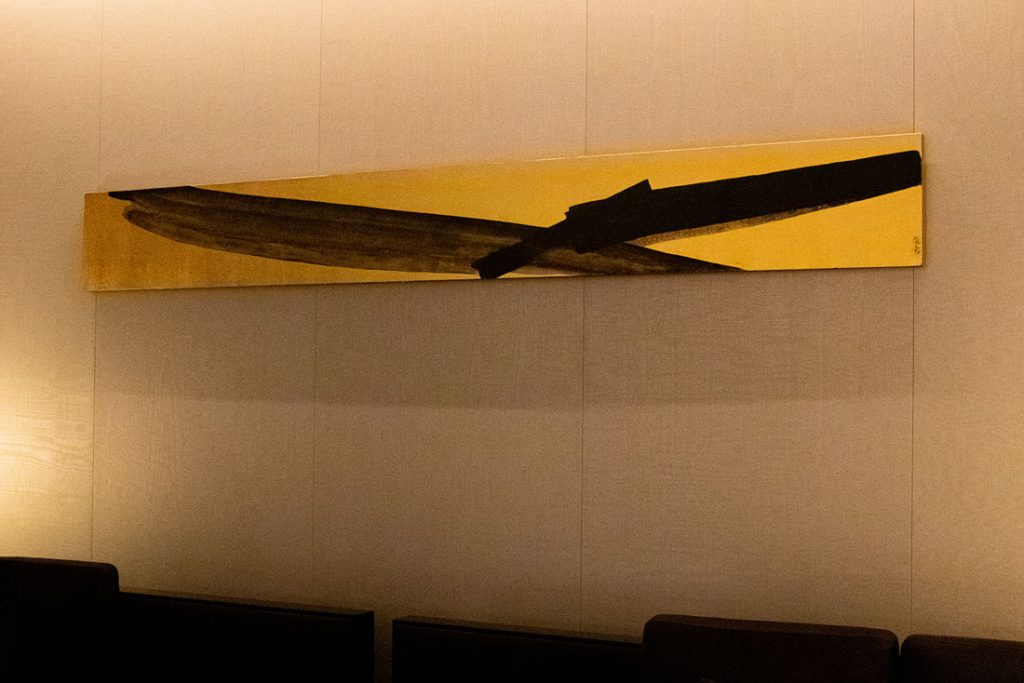
In 1966 the Beatles stayed at the hotel and were so inspired by Toko’s art that they purchased the calligraphy pen she used to paint the piece ‘Untitled’.
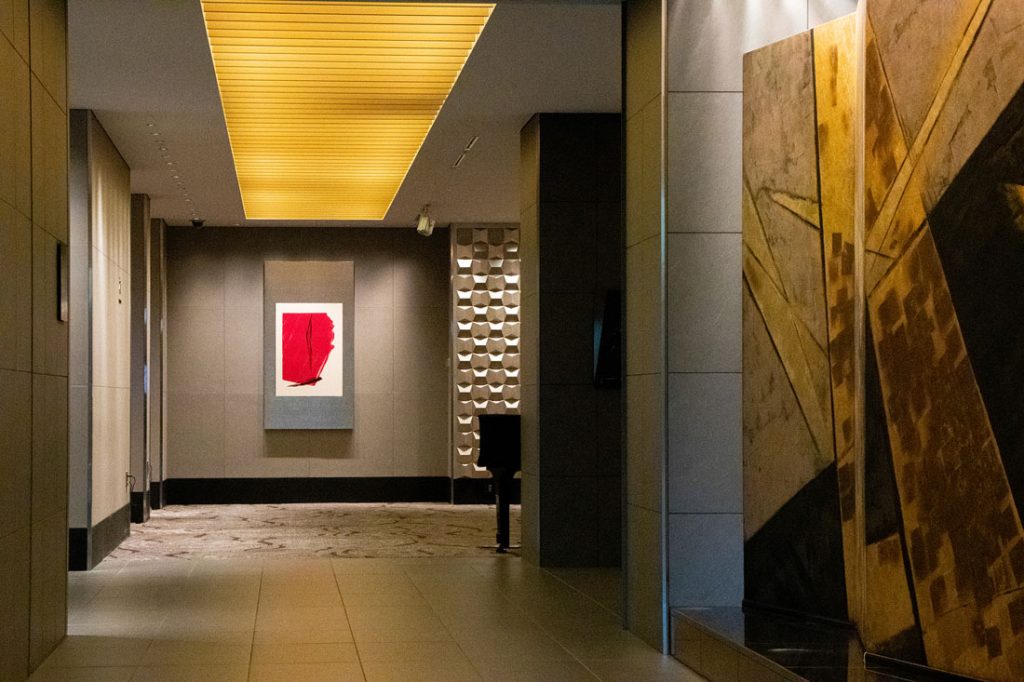
Rosanjin Kitaoji
The Capitol Hotel Tokyu stands on the hill of Hie Shrine, which has long been called “Hoshigaoka” (Star Hill), it was famous being a perfect place for star gazing. From the end of the Taisho era to the beginning of the Showa era, the epicurean Rosanjin Kitaoji founded the private members club “Hoshigaoka Saryo”, which became a place of social gathering for many influential figures in politics and business. This signboard for the private club was hand carved by Rosanjin Kitaoji.
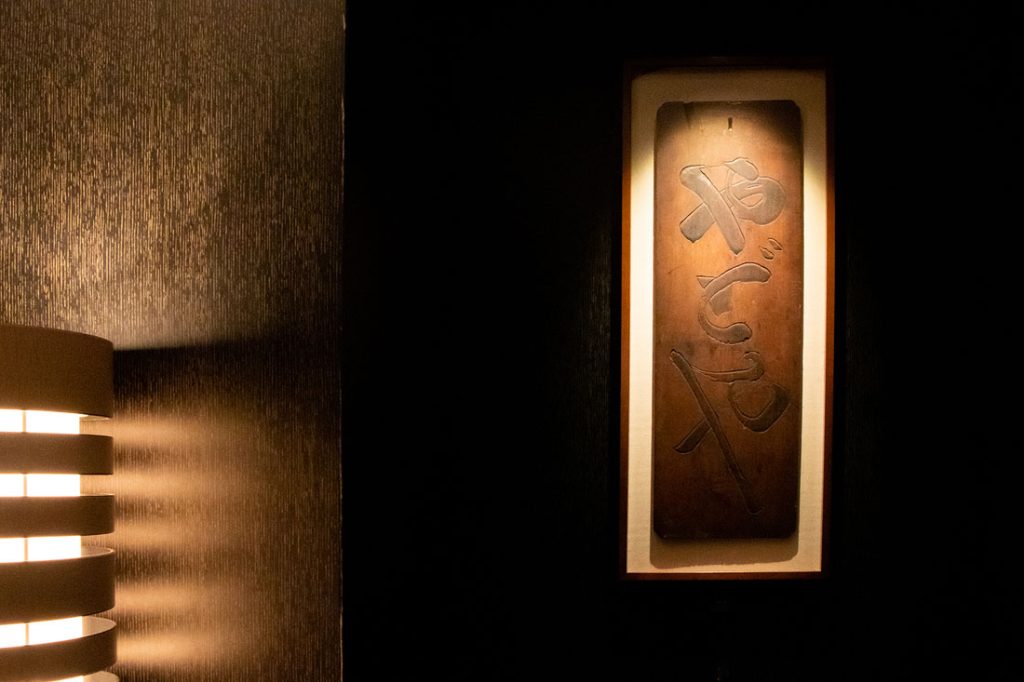
Shikō Munakata
Shikō Munakata was a woodblock printmaker active in Shōwa period Japan. He is associated with the sōsaku-hanga movement and the mingei (folk art) movement. Munakata was awarded the “Prize of Excellence” at the Second International Print Exhibition in Lugano, Switzerland in 1952. He was awarded the Order of Culture, the highest honour in the arts by the Japanese government in 1970. He described his own work as “paintings that emerged from inside wood plates”. The piece in the hotel was made in 1955 and exhibited at the 28th Venice Biennale in Italy the following year and received the Grand Prix International Print Award.
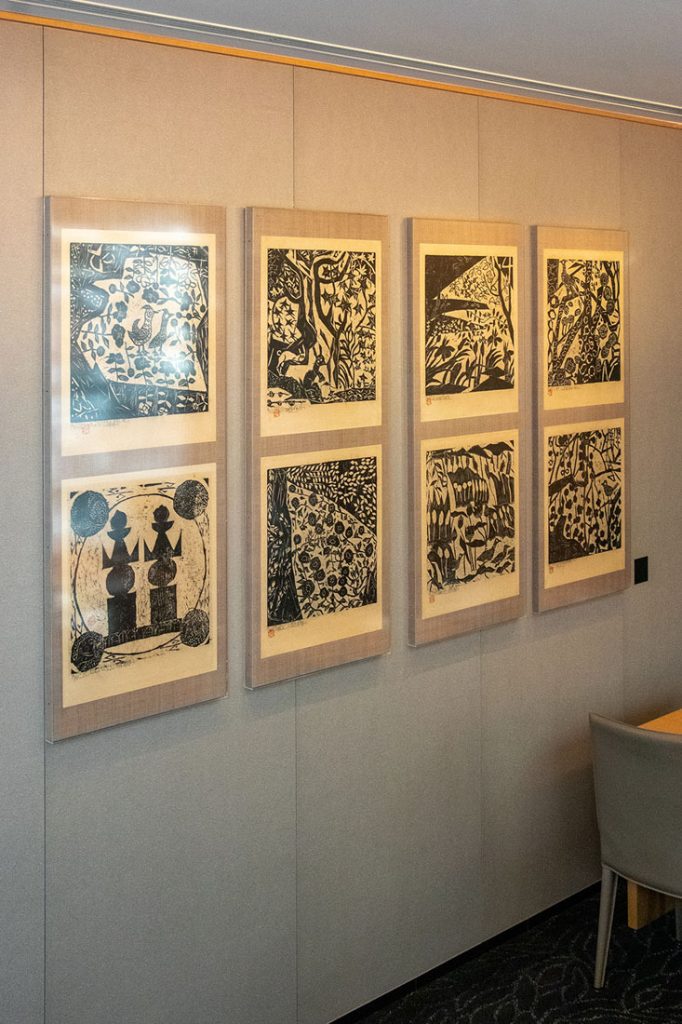
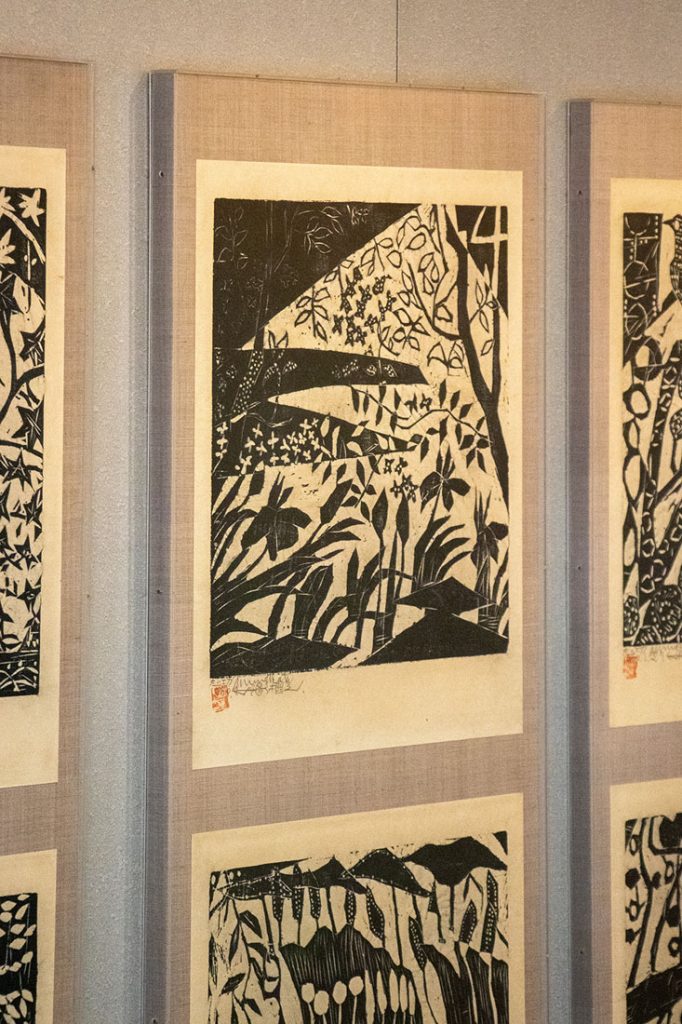
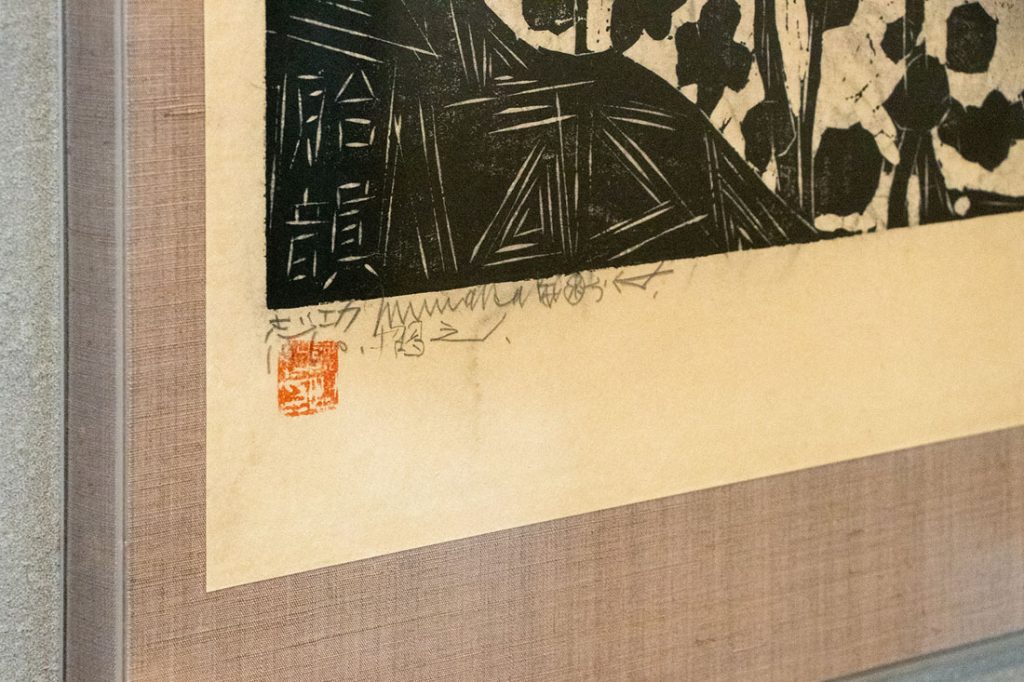
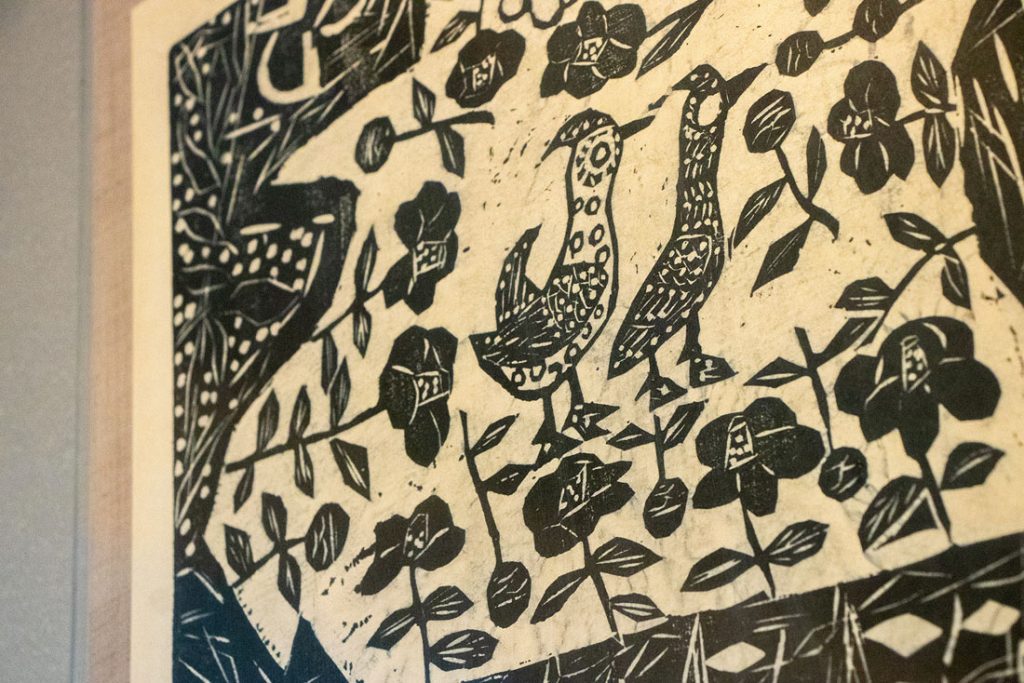
Masamune Date
Masamune Date was a regional ruler of Japan’s Azuchi–Momoyama period through early Edo period. Heir to a long line of powerful daimyō in the Tōhoku region, he went on to found the modern-day city of Sendai. An outstanding tactician, he was made all the more iconic for his missing eye, as Masamune was often called dokuganryū (独眼竜), or the “One-Eyed Dragon of Ōshu. He was known to send letters that he wrote himself and this artwork is a letter that he sent to Sokun Imai, his master of Japanese tea ceremony asking him if he would be happy to get some fish from him.

Yutaka Yoshinaga
Yutaka Yoshinaga is a Japanese Asian Modern & Contemporary artist who was born in 1948. Numerous key galleries and museums such as Royal West of England have featured Yutaka Yoshinaga’s work in the past. Located in the private room “Hikari” in the restaurant All Day Dining “ORIGAMI”, the artwork is called “Red Arc” by Yoshinaga Yutaka, and was created through an original technique of using pastels on echizen Japanese paper, which is known as the highest quality Japanese paper.
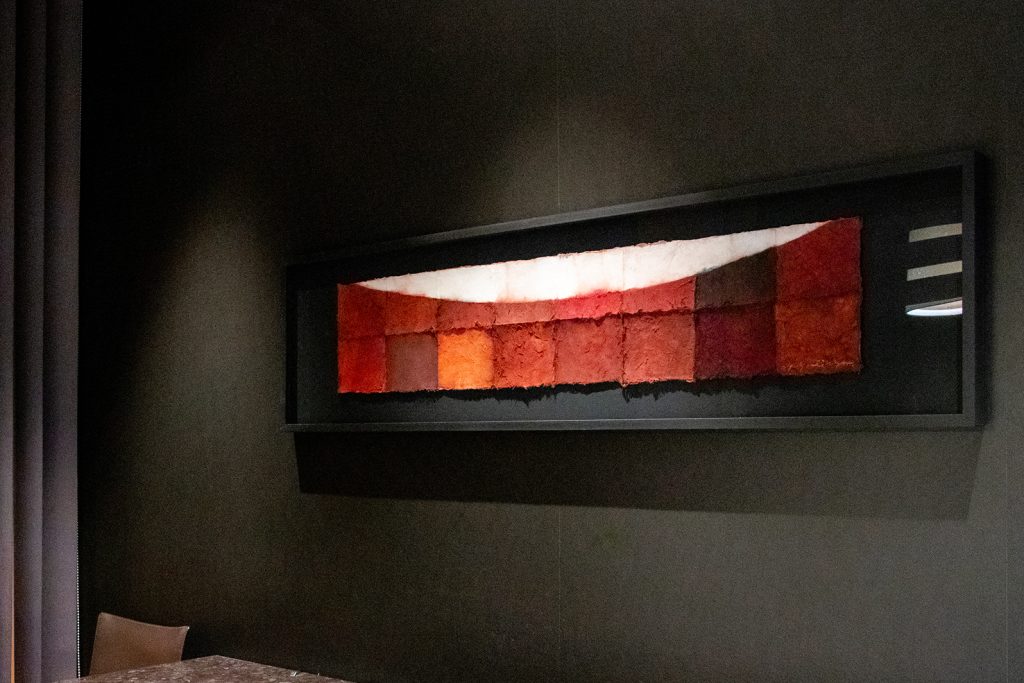
Design
In addition to the art pieces in the hotel, design has played a big role in the look and feel of the hotel both inside and outside in the surrounding gardens. Kengo Kuma was the architect of the current exterior and lobby design at The Capitol Hotel Tokyu. When he started working on the design, he decided to look at the relationship between the outside and the inside. With the interiors, he didn’t want guests to feel claustrophobic, but feel a continuity between the interior space and the forest and shrine outside.
He commented: “It’s a miracle that such a densely wooded environment still exists in the middle of the city. I think this is the perfect timing and location to present the best of Japan’s culture to the world. I want this hotel to be the kind of place where words are not necessary. I want the place itself to convey the very best that Japan has to offer and to become the core of Tokyo culture.”
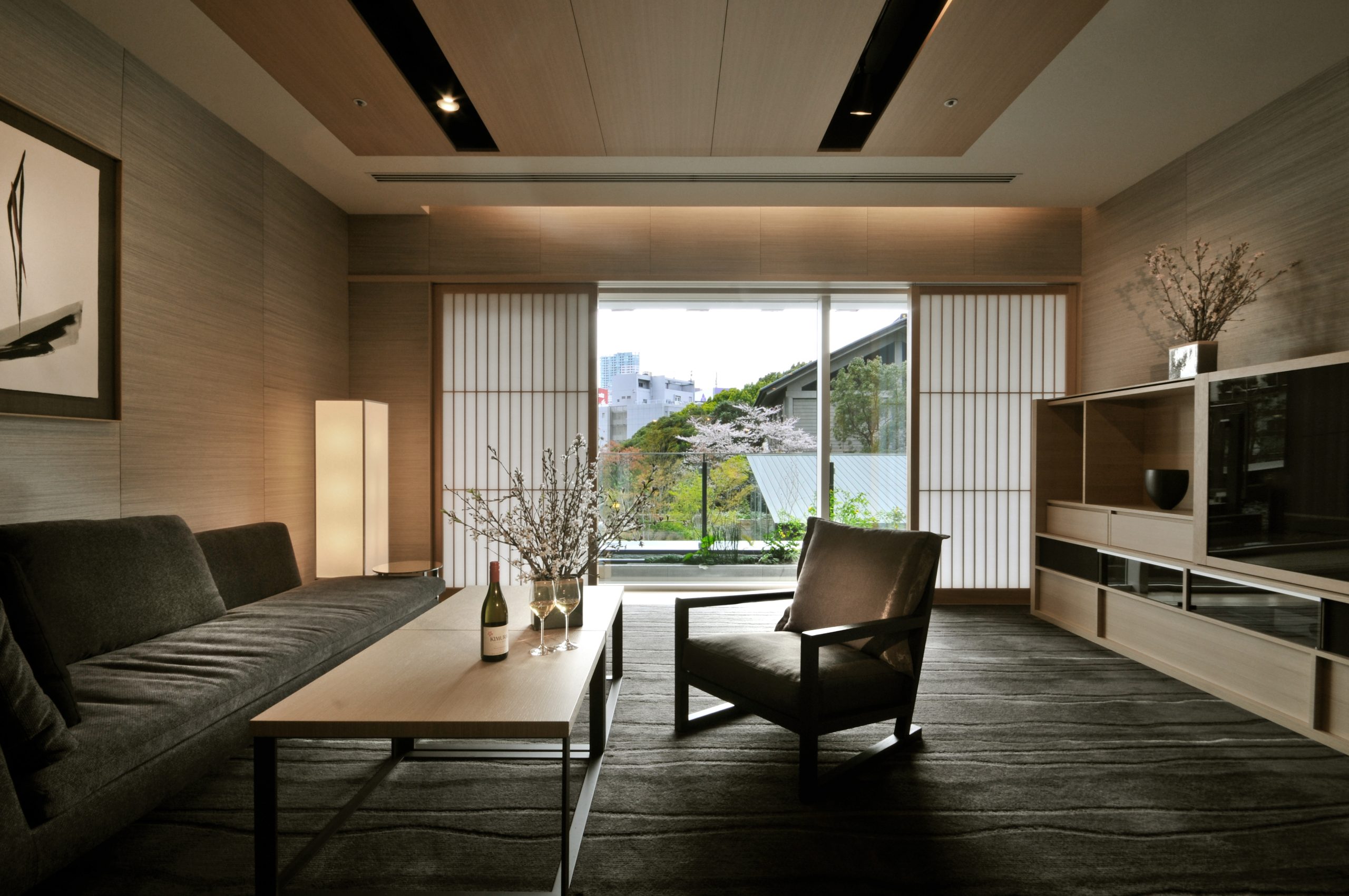
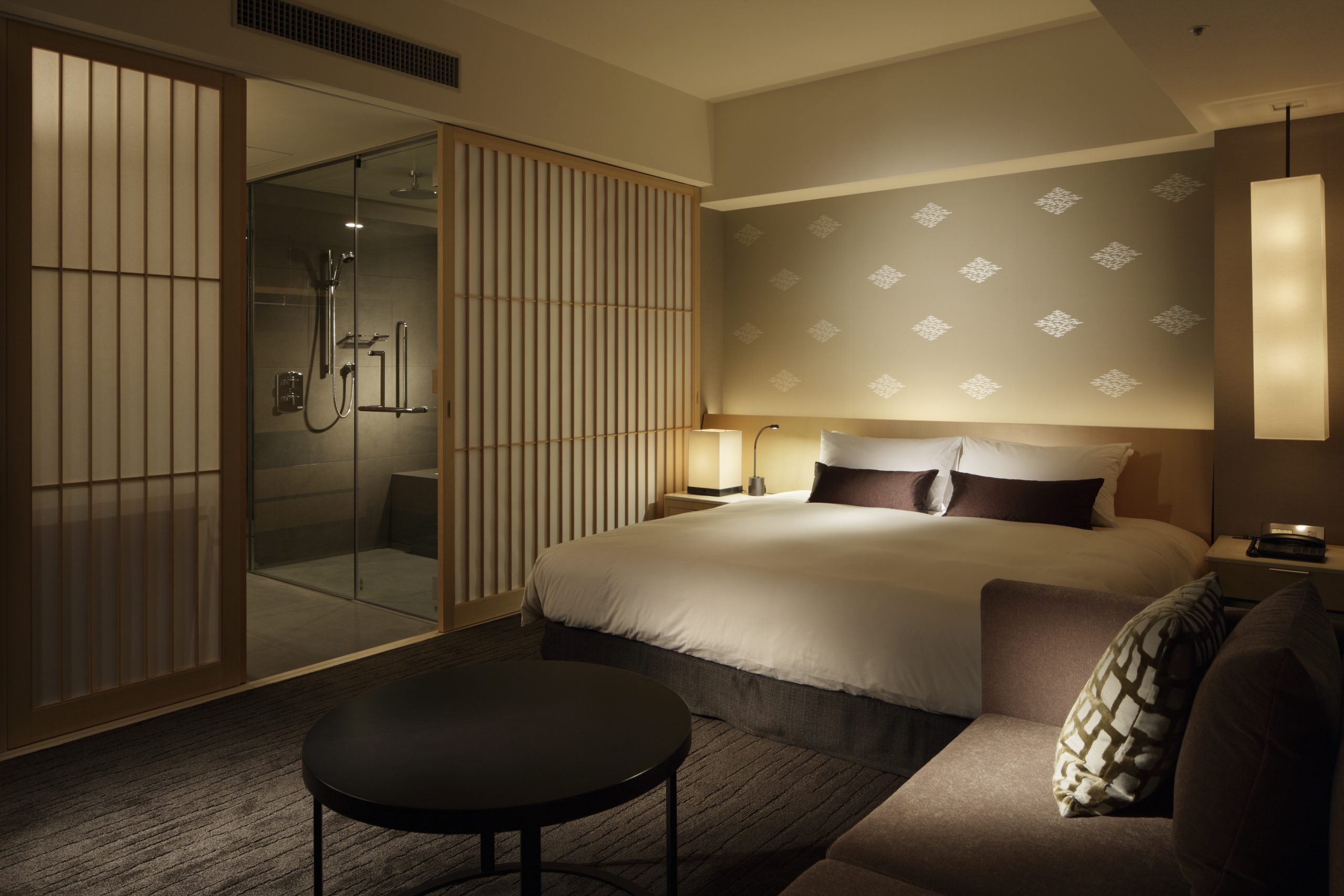
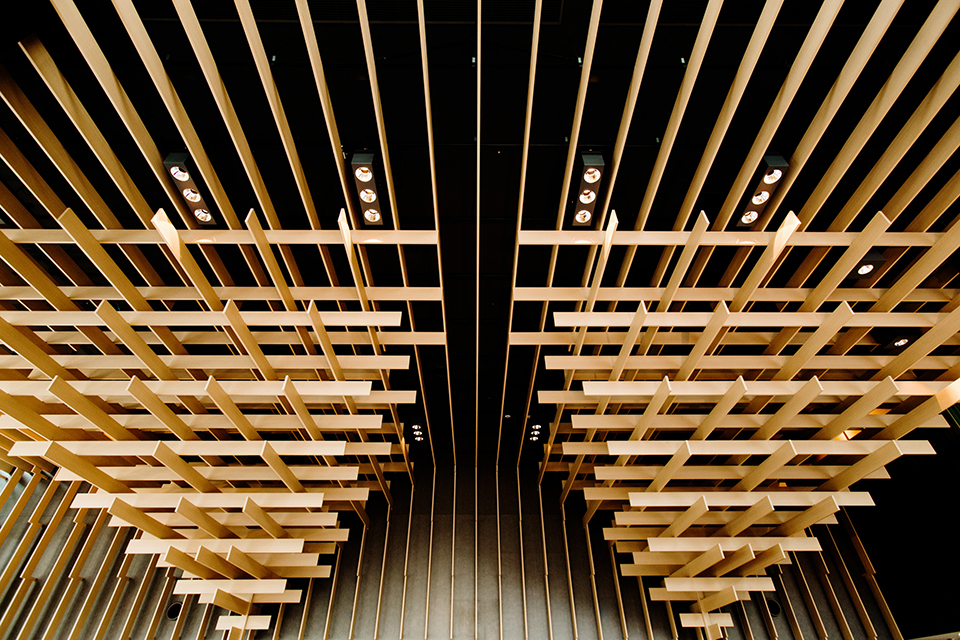
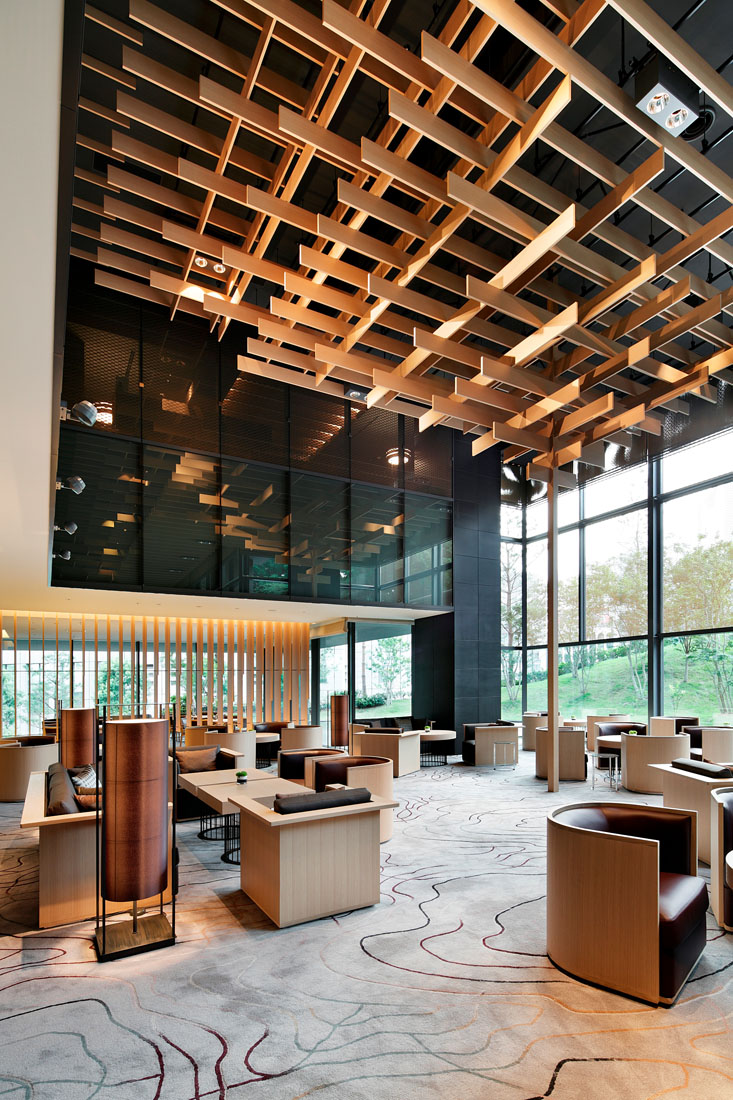
One of the most distinctive features is the 3F main lobby, “Tokio(To-kyo)”, inspired by the wooden structure roof of a traditional Japanese shrine. The building is designed to welcome guests warmly, without the intimidating feeling of high-rise buildings, sharing a space with the 500-year old Hie Shrine.
Shunsaku Miyagi was in charge of the landscape design. He chose to emphasise the connections between the building, shrine and the garden. “It was necessary to confront the culture and history of the place. I wanted to express something more than the current trend or a trite image of ‘Japaneseness’.”
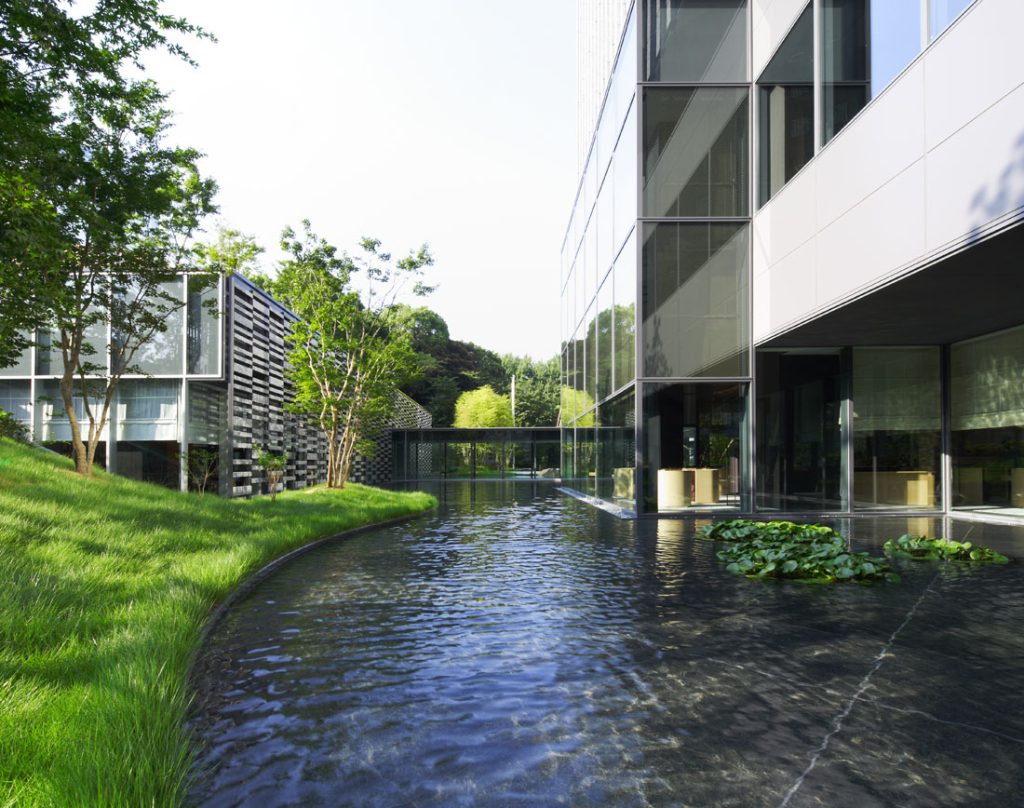
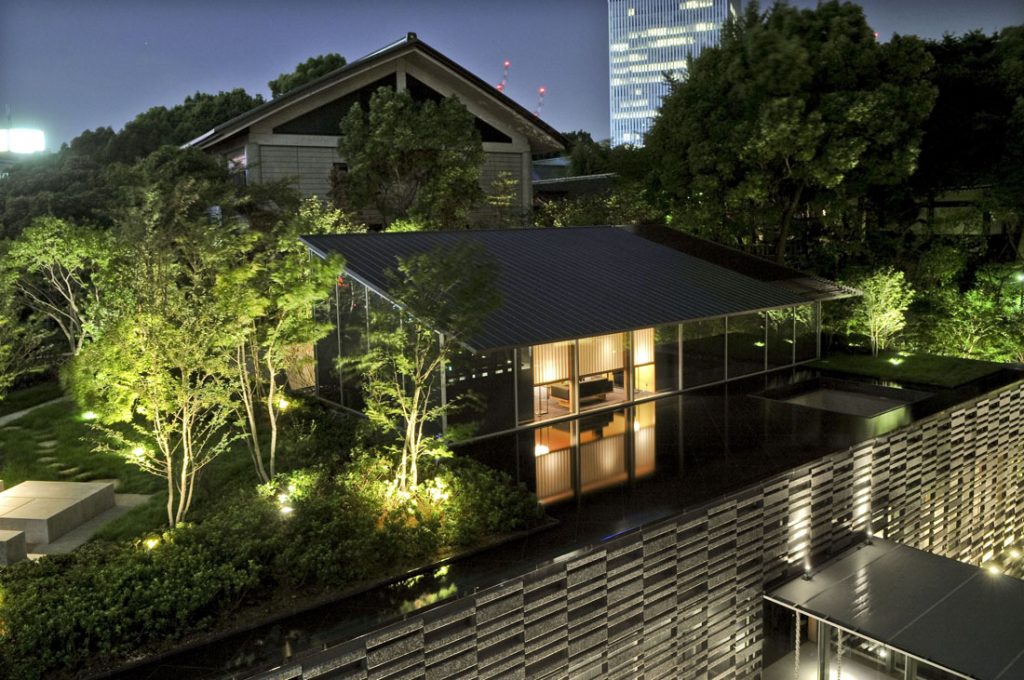
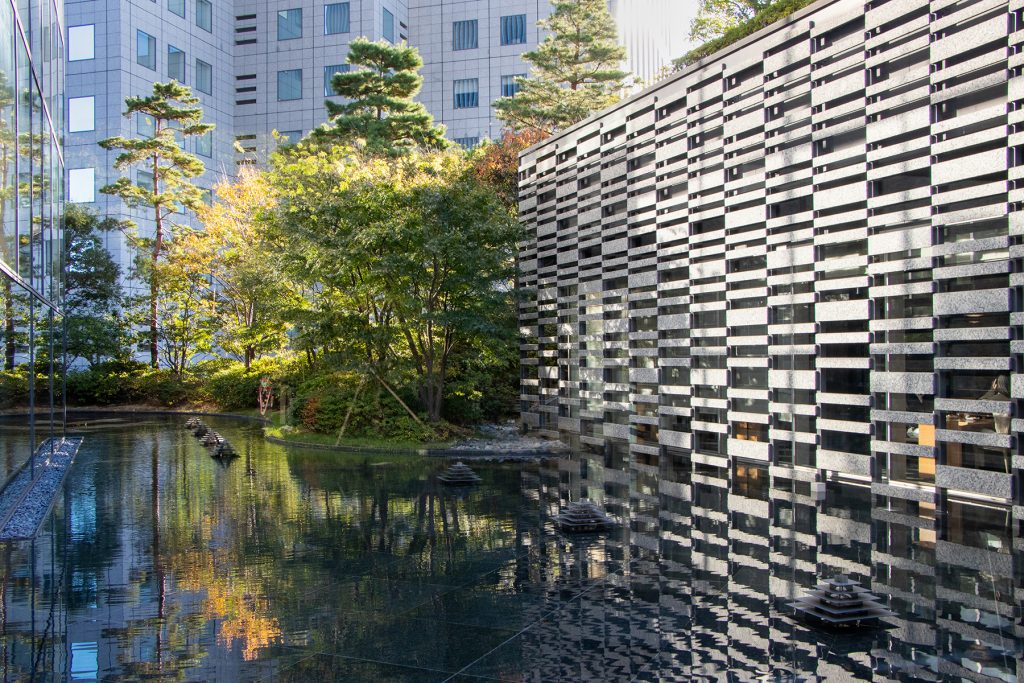
Visit the hotel’s website here


